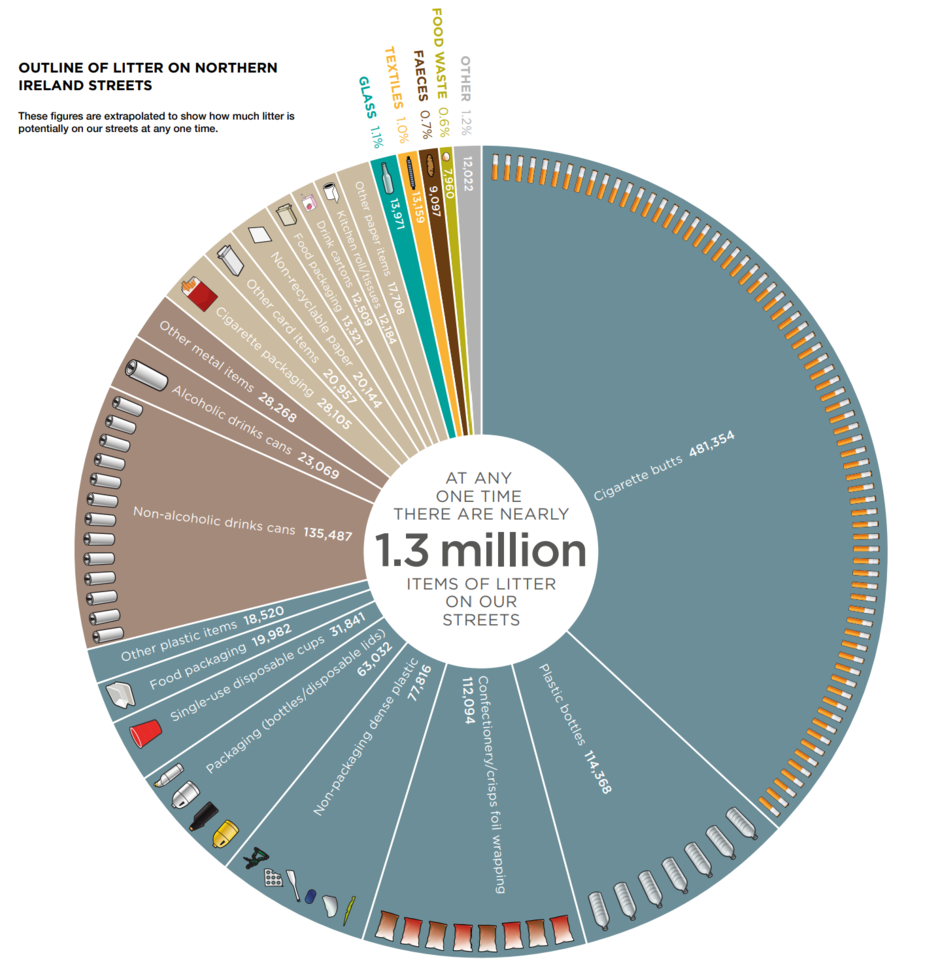To mark Plastic-Free July Veolia joined the Institute of Water Northern Ireland Area Young Persons Network along with Claire Leonard from local charity, Keep Northern Ireland Beautiful for a hot topic webinar to discuss the impact of single-use plastic on our marine environments and how wastewater treatment plants are impacted.
Single-use plastic has been an emerging topic since the 1980s when it was first highlighted that microplastics (MPs) were present in our oceans and with a recent study in 2019 reporting the presence of MPs in our drinking water, understanding the impact of MPs on our environment and human health has becoming a more intensely researched issue.
Marie-Pierre Denieul, Senior Project Manager from Veolia’s Scientific and Technological Expertise Department, kicked off the webinar by discussing the difficulty of sampling MPs in water samples as the tools and analytical protocols to assess MPs are currently not standardised. This makes it difficult to compare studies and interpret results. Therefore, in 2019, Veolia engaged in a 2-year project called MEDIPLAST at Toulon Bay in the South of France.
A robust and proven methodology
By using a robust and proven methodology for MP analysis in conjunction with Aalborg University and the Alfred Wegener Institute, the first sampling period undertaken in the Autumn of 2019 showed positive results as it was observed all three Wastewater Treatment Plants (WwTPs) removed MPs entering the plant by 99%.
Over 90% of removal occurred at the first physico-chemical stage of treatment followed by over 67% at tertiary biofiltration with only 3 MPs per litre observed in site discharge.
WwTPs are often portrayed as a source of MPs, whereas the real source of MPs stands upstream in raw wastewaters. The Mediplast Project has highlighted that for the three WwTPs studied, wastewater treatment can in fact act as an effective barrier for 10 um - 300 um plastic particles, reducing the amount of MPs reaching marine environments.
It was also determined that more than 50% of the plastic sampled in the raw wastewaters was polyester followed by polyethylene and polypropylene in the form of fragments and fibres, suggesting a lot of the plastic in our wastewater streams starts as terrestrial litter.
MEDITPLAST is a European Research and Development project led by Veolia and supported by the Water Agency RMC. The main aims of MEDITPLAST includes:
- Identify the source of MPs entering the 3 WwTPs at Toulon Bay.
- Characterise the type and occurrence of MPs in Toulon Harbour and surrounding marine environment.
- Evaluate the treatment efficiency of WwTPs to remove MPs from source to discharge.
- Assess the ecotoxicological impact of MP discharges to marine environment.
Claire Leonard added to this point as in KNIB’s Litter Composition Report 2019-20, it was observed that 71% of litter collected around Northern Ireland was single-use plastic and that 80% of marine litter is estimated to started as terrestrial litter.
Therefore, in order to reduce the amount of MPs entering our wastewater networks and plants, we need to target the source by getting consumers to reduce their use of plastics and ensuring a circular economy through improved recycling and disposal systems. The implementation of key legislation is a critical part of tackling this problem.
Attendees were also encouraged to join 500+ others who have made a Plastic Promise by committing to reduce their use of single-use plastic where they could.
The webinar was a great way to highlight the impact MPs have on the water industry to IOW members and how by taking part in Plastic Free July, you can educate yourself on the types of single use plastics in your household and start taking small steps towards a more plastic-free lifestyle to reduce plastic waste.



